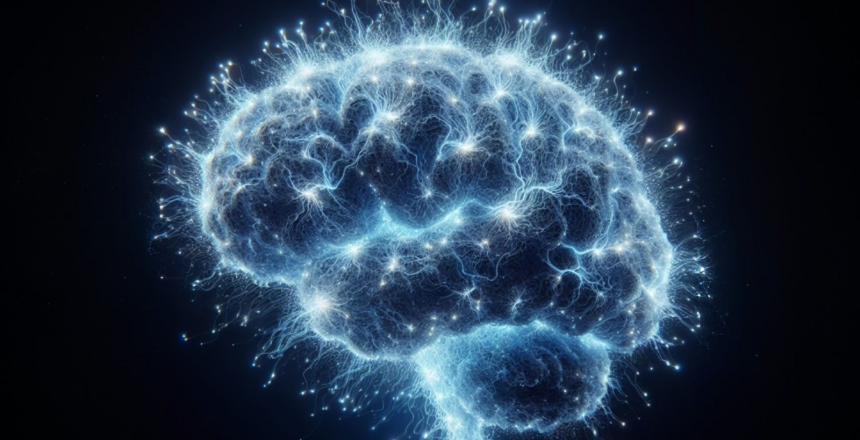As Seen In the Reno Gazette Journal
We routinely get MRIs for torn ligaments and EKGs to detect heart problems but refuse to use technologies to identify and treat issues with the brain. The brain is a complex organ that contains blood vessels and nerves, including neurons and glial cells, which control thought, memory, emotion, motor skills, vision, hunger, and every process that regulates our body. So why do we treat it like a black box instead of an organ that can be fixed?
How Are Problems with the Brain Diagnosed?
To determine a problem with the brain, doctors may ask a patient how they feel or observe their behaviors. They use a qualitative assessment to diagnose and then prescribe. Many of the diagnoses lead to recurring referrals to doctors who ask more questions and then write more prescriptions. This results in a lifetime of therapy sessions, prescription drugs with potential side effects, and questionable effectiveness. Can you imagine how many patients would be dead if that was how we diagnosed any other organ disease or disorder?
How Effective Is the ‘Ask the Patient’ Brain Diagnosis?
As you would suspect, with no real quantitative analysis or physical test of the brain, the prescriptions are often ineffective. For example, according to the National Library of Medicine, “data suggests that only half of the patients experiencing major depressive disorder are accurately diagnosed and that only half of those accurately diagnosed are adequately prescribed.” It would be medical malpractice if your doctor just asked you how your heart feels (no blood test, electrocardiogram, Holter monitoring, or echocardiogram) and then prescribed medications that did not address the problem 75% of the time. How about if you were told there is no cure for your child’s autism, “no cure exists for autism spectrum disorder. The goal of treatment is to maximize your child’s ability to function by reducing disorder symptoms and supporting development and learning.” Mayo Clinic. Yet thousands of children with autism have been moved closer to and, in numerous cases, into the neurotypical (normal) range by Electromagnetic Brain Pulse Treatment.
What is Electromagnetic Brain Pulse (EMBP) Treatment?
EMBP treatment uses FDA-cleared Class II medical devices, including electroencephalogram (EEG) and Transcranial Magnetic Stimulation (TMS), to uniquely image the brain’s electrical activities. EMBP treatment then identifies underlying abnormalities and non-invasively treats the brain to restore optimal neurological function. Using repetitive brain-wave-guided TMS, EMBP effectively modulates the brain’s activities, achieving durable results in most cases. EMBP has proven effective in treating neuropsychiatric disorders, including major depressive disorder, anxiety, PTSD, autism spectrum disorders, substance use, and many other mental disorders. Listen to this short video from a recent TEDx Salon, where several local EMBP patients tell their life-changing stories. https://youtu.be/qsaBcuH4bgM
The History of EMBP
Dr. Yi Jin, MD, through his academic research and clinical applications over the past 45 years, discovered the effectiveness of brain-wave-guided transcranial magnetic stimulation treatment. Throughout Dr. Jin’s work, more than 20,000 patients have been effectively treated. is While success rates vary, over 80% have a positive response, and over 50% experience dramatic and life-changing results. According to a double-blind, sham-controlled study, 55% of patients with moderate to severe autism spectrum disorder responded favorably to a 5-week treatment. A similar study with PTSD found that more than 80% of patients had a statistically significant positive response to the treatment. Additionally, not a single patient in either study, reported an adverse outcome.
What Does This Treatment Cost, and Who Pays for It?
EMBP is available internationally, but there are only a few locations in the U.S., including Reno! The cost is about $5,000 for two weeks of treatment, with an initial evaluation price of $750 and an additional $5,000 if more than two weeks are required. Depending on the patient’s diagnosis, insurance reimbursement may be possible.
Imagine a World Where the Brain is Tested and Repaired—Like Every Other Organ
A world where mental health issues are addressed before a suicide, or a life lost to drug addiction! A world where a permanent fix to a condition like anxiety, PTSD, schizophrenia, or autism is realized and is not dependent on endless therapy, drugs, and side effects with an overwhelming financial burden. In a world where the patient is not just told to try harder or to accept a disability and learn to live with it, or where sleep disorders are resolved, and people finally get the restorative sleep they need to enjoy a healthy life. This world is possible NOW, with EMBP.
For more information on the countless successful studies, including those with the military and the federal government, contact Dr. Judi Kosterman at the Brain Health Foundation jkosterman@bhlfoundation.org.
Strengthen our Community (SoC) is a non-profit (501c3) committed to developing cooperative, caring solutions to regional needs, with a special emphasis on education, families, good governance, and environmental sustainability. SoC is dedicated to confronting the important but complex issues in the region that have been difficult or even impossible to resolve. For more information on Strengthen our Community please get in touch with us at info@socnnv.org or 775-350-1465.
Article Sources:
- Autism spectrum disorder – Diagnosis and treatment – Mayo Clinic
- Antidepressant efficacy and side-effect burden: a quick guide for clinicians – PMC (nih.gov)






